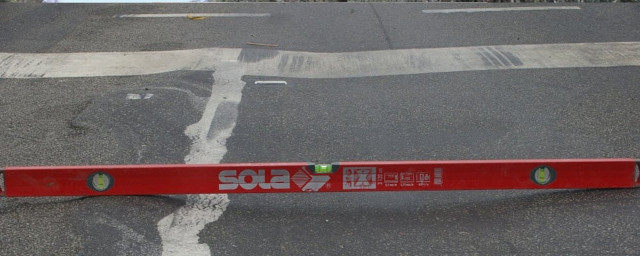 I commute on Highway 19 daily. The road has been maintained by filling the cracks with tar rather than repaving it. In the wet weather what I'm seeing is the ruts (worn into the driven part) in the right lane are holding up to 20 mm of standing water sometimes for hundreds of meters at a time.
I commute on Highway 19 daily. The road has been maintained by filling the cracks with tar rather than repaving it. In the wet weather what I'm seeing is the ruts (worn into the driven part) in the right lane are holding up to 20 mm of standing water sometimes for hundreds of meters at a time.
Pulling into the left lane provides a safer drive even at 30 km/h below the posted limit.
Ruts: aka Channelization
Channelization was the word I used as a collision investigator to describe ruts in the pavement caused by the passage, over time, of many vehicles. These ruts can be quite deep as you describe and the presence of standing water can be a significant hazard for hydroplaning.

Example of Channelization
Choosing Your Lane Position
It is often not necessary to drive in the left lane, simply moving a small distance to the right or left in the right lane will move your tires out of the ruts and out of the water. Of course, your solution of moving into the less travelled left lane requires less attention to lane position.
Highway Maintenance Standards
The BCGEU has published a video about BC highway maintenance standards. The video does not talk about channelization but does address other common highway defects and conditions. A link with the video lists contact information for the road maintenance contractors in each area of our province.
Reporting Highway Maintenance Problems
It is easy to identify a highway problem these days. DriveBC has an interactive map to help you locate the road maintenance contractor responsible and notify them of the problem.
In addition to the road maintenance contractors, one can Tweet to TranBC.
E-mail is also available: Minister of Transporation, Deputy Minister of Transporation or General Inquiries.
Tar Strips
The tar strips that you mention are put there to seal the pavement surface to keep water out rather than to repair the ruts. Once water enters the cracks that open in the pavement surface, freeze / thaw cycles can quickly break up the pavement even further. Hot tar or other compounds can seal these cracks effectively and keep the water away from the roadbed.
The only effective repair for these ruts are to repave the highway.
Share This Article
And on the subject of tar sealant, the bane of all motorcyclists (especially in the rain)
Some of us refer to them as tar snakes or road snakes, but in truth, a real snake (Alive, or flattened) would provide better traction.
- Log in to post comments
- Log in to post comments

Bane of Motorcyclists